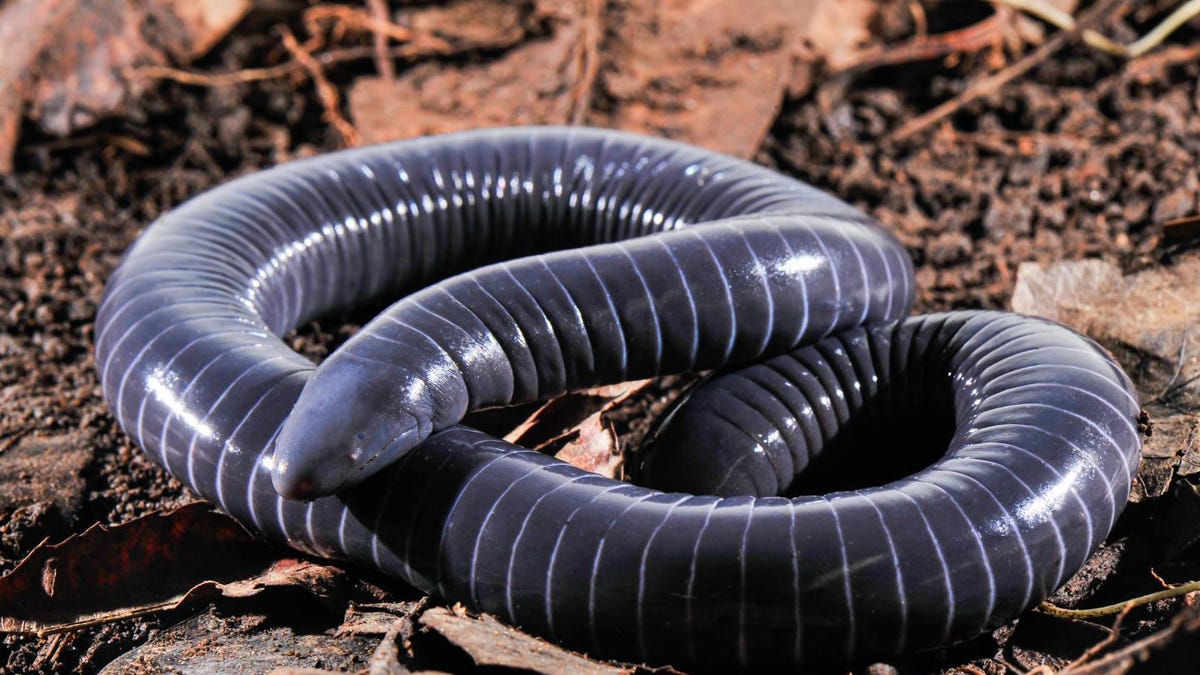Scientists find snake-like dental glands in an amphibian for the first time
Meet a legless caecilian with a funky mouth that may hide a venomous secret.
Pretty much nobody is losing sleep over fears of a toad bite, but you might want to start welcoming amphibians into your nightmares. Scientists have found evidence of snake-like dental glands in an amphibian for the first time, and, yes, that's pretty wild.
A team of scientists from the Butantan Institute in Brazil and Utah State University discovered "the first known evidence of oral venom glands in amphibians" inside the mouth of a ringed caecilian, Siphonops annulatus. This burrow-dwelling creature looks like a cross between a snake and a worm, but it's related to frogs and salamanders.
"We know a number of amphibians store nasty, poisonous secretions in their skin to deter predators. But to learn at least one can inflict injury from its mouth is extraordinary," said USU biologist Edmund 'Butch' Brodie, Jr. in a release on Friday.
The team had previously studied the caecilian's skin glands, but later found what Brodie described as "tiny fluid-filled glands in the upper and lower jaw, with long ducts that open at the base of each of their spoon-shaped teeth." Check out this memorable image to see what he's talking about.
Open wide. This ringed caecilian, Siphonops annulatus, has snake-like dental glands.
The researchers published their findings in the journal iScience on Friday.
Some amphibians, like the infamous poison dart frogs, are known for secreting toxic substances on their skin. "The poisonous skin glands form from the epidermis, but these oral glands develop from the dental tissue, and this is the same developmental origin we find in the venom glands of reptiles," said lead author Pedro Luiz Mailho-Fontana.
The next step is to find out if the secretions from the dental glands are toxic. If so, the researchers suggest that venom glands may have developed in amphibians earlier than they evolved in snakes.
"Because caecilians are one of the least-studied vertebrates, their biology is a black box full of surprises," said co-author Carlos Jared in a release from Cell Press, publisher of iScience.
Humans don't really need to worry about Siphonops annulatus. The tiny amphibians like to chow down on insects, worms and frogs. They're not interested in munching on people.


